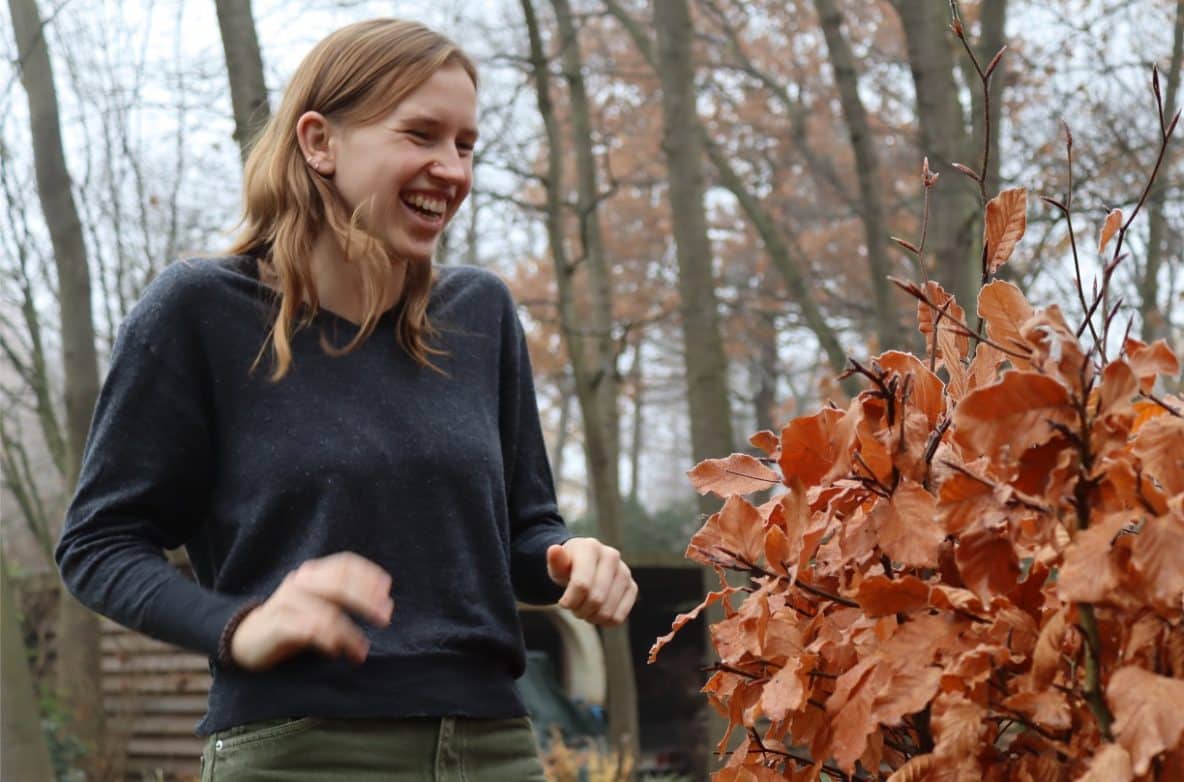We made a multimedia project about sustainable circular economy for English 3. The medical world is a wasteful place, but Loore Nelen wants to be part of the change. Listen and watch her story.
Loore Nelen, a gifted designer
At the moment, an anaesthesiologist needs three objects to put patients under narcosis: a syringe, a needle, and a medication vial. Loore Nelen (22) has potentially found a solution for this wasteful practice. Because doctors throw away every single piece after usage, it is a burden on the planet. The disposable culture in the medical world is problematic. In Belgium anaesthesia generates 12,500 tons of waste per year. As a product designer, Nelen went looking for a better alternative. She developed a prototype of her new design called REDOSE, an object that combines all three things and is reusable. Give or take in about ten years there’s a possibility it will be available for surgeons. The pharmaceutical companies have to see potential and of course, the product still needs a lot of work. But Loore has already gotten some affirmation for her project: she won the Ecodesign Award from OVAM (Openbare Vlaamse Afvalstoffenmaatschappij) and Vlaanderen Circulair. For sixteen years, this price has been awarded to students who come up with a product that can change the world. Something Nelen aspires to do. After graduating, she didn’t start working in the field immediately. First, she wanted to gain some knowledge and know-how in Radio. She dreams of becoming a podcast host where she will talk about sustainable new products. The medicinal world will always hold a special place in her heart, but more on that in the photo montage below. Below is a video interview with Nelen as she motivates her product and talks a little more about the design process.
Inspiration is key
Loore Nelen has now come up with a successful prototype that has the power to change the medical field forever, but that didn’t happen overnight. The idea didn’t immediately spring to her mind. She drew inspiration from the work of her fellow students and decided to follow one of her passions, that being medicine. Nelen has now graduated in Product Development from the University of Antwerp but first, she took the entrance examen in Medicine. She failed, but that didn’t cause her interest in the medical field to disappear. So when the assignment camein class to make the operating theatre in hospitals more environmentally friendly, Nelen immediately became enthusiastic. Indeed, eco-friendliness is something she has recently come to consider very important. This is due to her Ecodesign professor, Karine Van Doorsselaer. She is always proclaiming to all students that our climate is hugely important and that a lot of misinformation is being spread around. Van Doorsselaer even goes to all kinds of fairs and talks to everyone she meets about the current climate issues. She has already opened the eyes of quite a few students and even some companies.
Nelen drew inspiration for her invention from another project. Some students had the idea of making surgical wipes somehow environmentally friendly. Nelen decided to do something similar with the devices that carry medication for the patient to be operated on. After a lot of input from multiple anaesthetists and some others in the medical field, she came up with a device that can initiate anaesthesia for patients without syringes, needles and medication vials. The device was named “REDOSE”, as it can be used again and again after cleaning.
An experts opinion
Ewout De Pauw is a third-year resident anaesthetist at the University Hospital in Ghent. He has been specialising in anaesthesiology for two and a half years now. Before he can sedate a patient, he must check the patient’s medical history and run a few tests. By doing that he can conclude which anaesthesia is the best and the safest for the patient. When he has decided on the anaesthesia, he puts the patient on monitoring and the nurses put in an IV. Then, he gives the patient the induction medication. After intubating the patient to secure their airway, the surgeons can start the surgical procedure. He has a container with all the medication in it, the vial itself, which is made of either plastic or glass, a needle, and a syringe. Which means that, with every surgery, he uses four objects that get thrown away after a single use.
De Pauw is open to the idea of reusable medical products and would like to try and see how it works. He wants to know if there is a difference in usage. He isn’t sure if his colleagues would like to use REDOSE too. He thinks the idea of reusing something might interfere with microbes and might cause an infection or it might mix up medications used on other patients. The anaesthetist thinks there’s definitely room for improvement. He says that in the last few years, there haven’t been many new medical advancements. The improvements are mostly new machines but have nothing to do with the medical waste issue.
Article by Luka Van Dessel, Vincent Peetermans, Arlena Fonteyne, and Nicolas Huyghe
[jetpack-related-posts]
